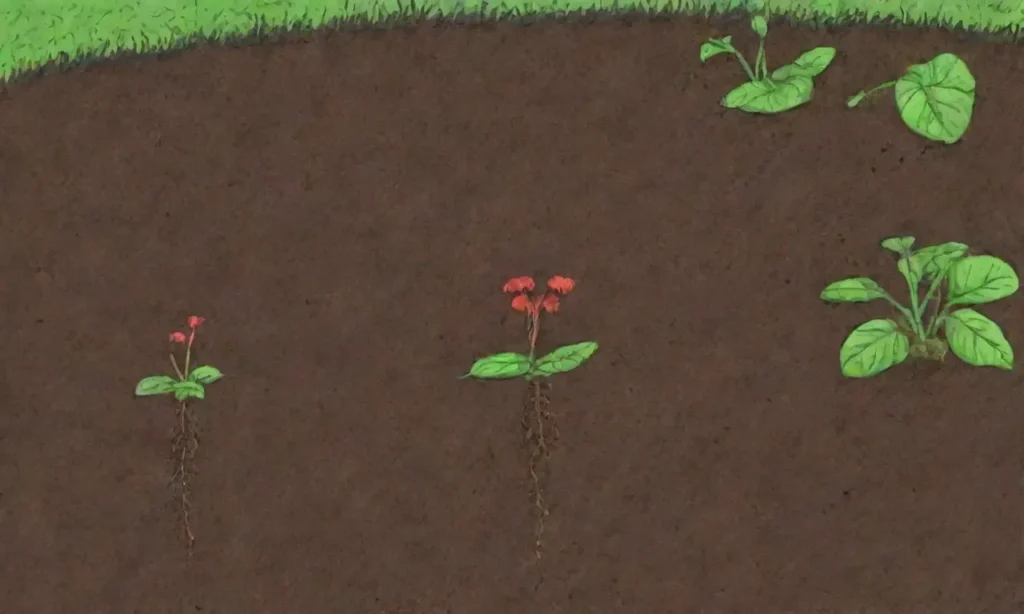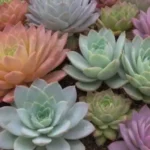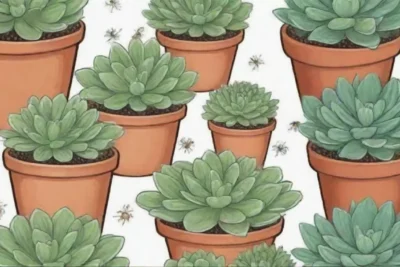
Understanding Fungus Gnats and Their Impact on Succulent Growth

Introduction
Fungus gnats are tiny flying insects that can pose a significant threat to various houseplants, particularly succulents. These pests thrive in moist environments and often infest the soil of potting mixes, leading to problems not only for the plants themselves but also for gardeners trying to cultivate healthy specimens. Understanding the lifecycle of fungus gnats, their behavior, and their impact on succulent growth is crucial for preventing infestations and maintaining the health of these beloved plants.
In this article, we will delve into every facet of fungus gnats, from identifying their presence and understanding their lifecycle to exploring how they affect succulent growth and, importantly, how to control and prevent these pests. By gaining insight into these seemingly minor nuisances, you can take proactive steps to protect your succulents and ensure their flourishing growth.
What Are Fungus Gnats?
Fungus gnats are small, winged insects belonging to the family Sciaridae. They are often mistaken for fruit flies due to their size and dark appearance, typically measuring about 1/8 of an inch long. Their bodies are slender, and they possess long legs and antennae. Adult fungus gnats are often found flying around potted plants or near soil, but it’s their larvae that cause the most damage to plants.
These pests thrive in warm, moist environments, making indoor houseplants, especially those that require frequent watering, prime targets for infestation. Fungus gnats are attracted to decaying organic matter, which they utilize as a food source. As the larvae feed on decaying plant material and root hairs in the potting mix, they can severely damage the delicate root systems of succulents, leading to poor plant health and stunted growth.
Understanding their behavior and breeding ground is vital not only for avoiding infestations but also for appreciating how they interact with the ecosystems of your houseplants. Fungus gnats are known to reproduce quickly, laying hundreds of eggs in the moist soil of potted plants. Under suitable conditions, their lifecycle can progress from egg to adult in as little as a week, leading to rapid population growth if left unchecked.
The Lifecycle of Fungus Gnats
The lifecycle of fungus gnats consists of four stages: egg, larva, pupa, and adult. The egg stage occurs when a female fungus gnat lays her eggs in the upper layer of damp soil, often in the presence of decaying plant organic matter. These eggs hatch into larvae within 4 to 6 days, depending on environmental conditions like temperature and humidity.
The larval stage is where the most significant damage occurs. Fungus gnat larvae are small, translucent worms that feed on decaying organic matter and root hairs of the succulent plants within the soil. When finding a suitable food source, the larvae can cause root damage and may even lead to the failure of nutrient absorption, resulting in slower growth and increased susceptibility to disease. Prolonged infestation can exacerbate these issues, leading to wilting leaves and eventual plant death.
 All About Whiteflies: Common Pest Trouble for Succulent Lovers
All About Whiteflies: Common Pest Trouble for Succulent LoversAfter approximately two weeks, the larvae enter the pupal stage, where they burrow into the soil to transform into adults. This pupation period usually lasts about 5 to 7 days, after which adults emerge and continue the cycle. Once they mature, adult fungus gnats can live for several weeks to a month, exacerbating problems since females can lay hundreds of eggs in that time. Addressing infestations early in the lifecycle can save your succulents from extensive damage and ensure their longevity.
Identifying Fungus Gnat Infestations

Recognizing the signs of fungus gnat infestations can be essential for the prompt action needed to mitigate their impact on your succulents. Adult gnats can often be seen flying around the top of the soil, especially after watering or disturbing the plants. While they might be annoying, the real danger lies in the larvae, which are not as easily observed.
One of the most common ways to identify fungus gnat larvae is by examining the soil. If you see small, translucent worms wriggling in the soil or just underneath the surface, you likely have an infestation. Yellowing leaves as well as leaves that are wilting or showing signs of stress can also indicate a decline in plant health due to root damage caused by the larvae.
Another great way to detect fungus gnats is through the use of sticky traps. These traps are yellow and can attract adults, making it easier to monitor their populations. Place the traps near affected plants to determine the severity of the infestation. A high number of caught gnats can warrant further investigation of the soil to ascertain the extent of larval presence. Early detection is key to arresting their life cycle before they cause significant damage to your succulent plants.
The Impact of Fungus Gnats on Succulents
The impact of fungus gnats on succulent growth can be profound, particularly when infestations reach significant levels. The primary issue stems from the feeding habits of the larvae, which directly affect root systems. Succulents are particularly sensitive to root damage due to their unique adaptations for water storage and nutrient absorption. When the roots are compromised, plants may struggle to take in water and nutrients, leading to stunted growth, wilting, and even eventual death.
Moreover, weakened succulents become more susceptible to infections and diseases caused by other pathogens in the soil. Open wounds in the root system can allow bacteria and fungi to establish themselves, contributing to a downward spiral in the succulent's health. Not only does this create unfavorable conditions for the plants, but it can also lead to added complications in the care process, such as increased watering needs or the introduction of fungicides and pesticides.
 Essential Prevention Tips for Keeping Your Succulents Pest-Free
Essential Prevention Tips for Keeping Your Succulents Pest-FreeIn addition to growth issues, fungus gnats can be particularly troublesome for gardeners who pride themselves on maintaining healthy plants. The mere presence of these pests can create an environment of stress and frustration, making gardening a less enjoyable and more tedious experience. Inability to eradicate these nuisances can lead to a negative cycle of despair for enthusiasts, making it essential to understand the best practices in managing and preventing infestations.
Prevention and Control Methods
Taking preventive measures is crucial to avoiding fungus gnats in succulent care. The first step is managing soil moisture levels. Fungus gnats thrive in moist conditions, so ensuring that the top layer of soil dries out between watering sessions can significantly deter their presence. Using a well-draining potting mix can also help minimize moisture retention, making it less hospitable for gnats to breed.
If you already have an infestation, there are effective control methods to implement. Organic options such as diluted hydrogen peroxide can be poured into the soil; this will kill larvae on contact while also promoting oxygenation of the soil. Additionally, introducing beneficial nematodes to the soil can provide a biocontrol method by naturally hunting down gnat larvae.
Another method worth considering is to incorporate microbial insecticides containing Bacillus thuringiensis israelensis (Bti). This naturally occurring bacterium is lethal to fungus gnat larvae but safe for plants and pets. Regularly monitoring sticky traps as mentioned before can also help you keep the problem in check.
Moreover, cultural practices can be beneficial in reducing the moisture content in the soil. For example, placing a layer of sand or gravel on top of the soil not only reduces the moisture available to gnats but also creates an unfavorable environment for laying eggs. Adjusting your watering techniques, such as watering from below, can also prevent gnats from being as attracted to the surface.
Conclusion
In conclusion, understanding and addressing the relationship between fungus gnats and succulent growth is crucial for gardeners who wish to maintain healthy plants. These pests may seem small and insignificant, yet their impact on the root systems and overall vitality of succulents can be severe. By recognizing their lifecycle and behavior, identifying signs of infestation, and implementing both preventive and control measures, you can cultivate a thriving environment for your succulents.
Creating a healthy growing environment is not only essential for the plants’ success but also for enjoying the gardening experience. Regular monitoring, adjusting care practices, and being proactive in management will ensure that fungus gnats do not disrupt your efforts. With the right approach, you can support the health and vitality of your succulent collection while enjoying the added beauty and satisfaction that these remarkable plants bring to your space. By staying vigilant and informed, you can mitigate the risks fungus gnats pose, allowing your succulents to flourish beautifully for years to come.
 Long-Term Solutions for Keeping Succulents Pest-Free Year-Round
Long-Term Solutions for Keeping Succulents Pest-Free Year-RoundIf you want to read more articles similar to Understanding Fungus Gnats and Their Impact on Succulent Growth, you can visit the Common Pests category.






You Must Read